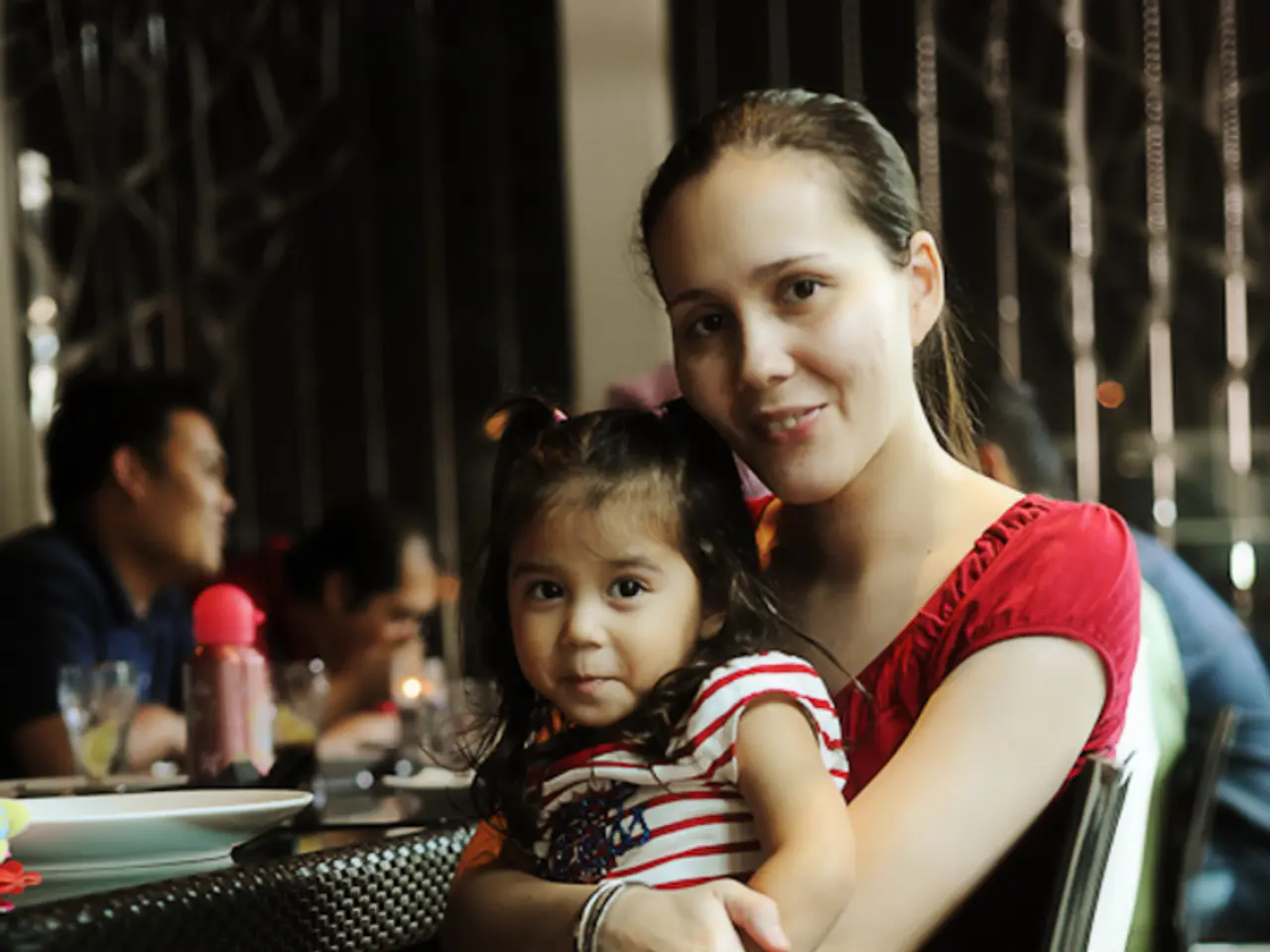Decline in Birth Rate Maintains Constant Desire for Offspring, According to Research - Decline in birth numbers recorded, yet childbearing rate preserves consistency
==================================================================
A new study by the Federal Institute for Population Research (BiB) in Wiesbaden provides insights into the factors contributing to the widening fertility gap in Germany. The study, based on a nationwide survey of over 15,000 individuals aged 18 to 49, does not indicate any significant change in the desire for children among women and men aged 30 to 39. However, it reveals that the number of desired children remains stable, yet the actual birth rate continues to decline.
The study highlights several key factors that contribute to the persisting fertility gap in Germany.
Gender Inequality and Labor Market Dynamics
Mothers in Germany often bear the majority of caregiving responsibilities, which leads many to reduce working hours or accept low-wage jobs. This dynamic discourages higher fertility because women face a tradeoff between childbearing and career advancement. Despite policies like parental leave, the uptake by fathers remains low, reinforcing traditional gender roles and limiting workforce participation for women post-childbirth.
Caregiving Burden and Parental Leave
Although parental leave policies exist, fathers typically take only minimal leave. This limited sharing of childcare responsibilities perpetuates a gendered division of labor after childbirth, contributing to labor market challenges and disincentives for having more children.
Regional Fertility Differences and Societal Changes
After reunification, fertility rates in former East Germany dropped sharply due to a "demographic shock" linked to greater life choices after the end of the GDR and shifts in societal values toward later motherhood. Although fertility in East Germany has been rising and sometimes exceeds that in West Germany, the overall national fertility remains below replacement levels.
Gap Between Fertility Ideals and Reality
Germans tend to desire an average of about 2 children per woman, yet actual fertility rates hover around 1.35-1.4 children. This gap suggests that real-world constraints—economic, social, and institutional—prevent people from meeting their fertility ideals.
Aging Population and Economic Pressures
The aging population and economic strain, including labor shortages, create an environment where having more children is economically and socially challenging, further widening the fertility gap.
In summary, the widening fertility gap in Germany reflects the interaction of persistent gender roles that limit women's economic opportunities after childbirth, evolving social norms that delay or reduce childbearing, regional demographic histories, and the disparity between desired and realized family size driven by structural and policy limitations.
Population researcher Carmen Friedrich from BiB attributes the postponement of births in Germany to international crises (COVID-19 pandemic, Ukraine war, climate change), uncertain economic and personal conditions. The study does not provide new data on the birth rate or the fertility gap in Germany, but the current decline in births is suspected to be a postponement of births.
Despite the challenges, having children remains a central life goal for most young people, according to population researcher Carmen Friedrich. On average, women desire 1.76 children, while men desire 1.74 children in 2023 and early 2024. However, the desire for children among women aged 30 to 39 decreased from 28% to 24% between 2021 and 2024, and among men in the same age group, the desire decreased from 28% to 25% during the same period.
The study's findings support the idea that uncertainty has a negative impact on family planning in Germany. Martin Bujard, co-author of the study at BiB, suggests that reliable childcare, affordable housing, and political effectiveness could help realize desires for children and reduce postponement.
The Federal Institute for Population Research (BiB) in Wiesbaden reported the decline in the birth rate in Germany, with the birth rate decreasing from 1.58 children per woman in 2021 to 1.35 in 2024. The study does not indicate any change in the number of desired children among women and men in Germany, suggesting that the desire for children remains stable, but the challenges in realizing this desire persist.
The study at the Federal Institute for Population Research (BiB) suggests that the ongoing decline in the birth rate in Germany could be attributed, in part, to the lack of reliable childcare, affordable housing, and political effectiveness, all identified as factors that may impede the realization of the desire for children.
Moreover, the study advocates for the integration of vocational training programs as part of a community policy in Germany, contending that such initiatives could empower women by providing them with job opportunities and financial stability, thus alleviating the tradeoff between childbearing and career advancement, ultimately contributing to improved overall health-and-wellness and womens-health, as well as boosting the science sector through greater workforce participation.




